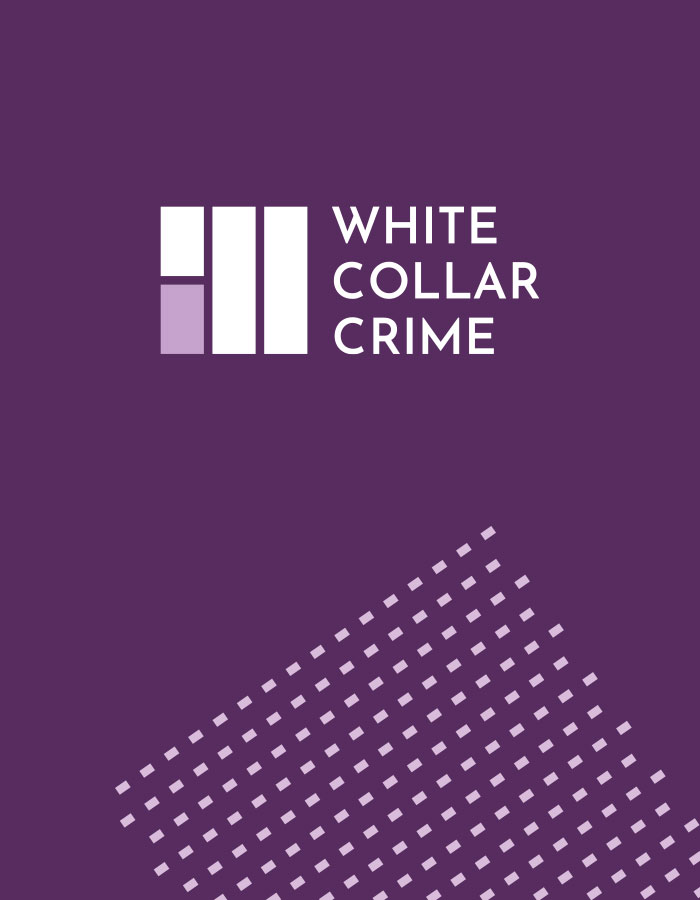Speed read: Jonathan Fisher QC discusses the history, problems and possible reforms for the law on suspicion, a crucial threshold for suspicious reporting which at present is hindering the anti-money laundering effort.
When Parliament introduced the anti-money laundering regime in Part 7 of the Proceeds of Crime Act 2002 (‘POCA’), it failed to define the threshold for reporting suspicious activity with any clarity. Subsequent judicial comments have hindered rather than helped, and most recently the Law Commission (Anti-money laundering: the SARs regime, Law Com No 384, HC 2098) has missed a generational opportunity to recommend robust statutory change. It is no wonder that defensive reporting of suspicious activity has pushed the number of financial disclosures and suspicious activity reports to approaching 0.5 million a year (Suspicious Activity Reports (SARs) Annual Report 2018).
The problem
The problem lies in the meaning of the word ‘suspicion’. Under sections 327 to 329 of POCA, an authorised disclosure should be made where a person knows or suspects that he/she is handling, or assisted in handling, criminal property. Moreover, pursuant to sections 330 to 332, a person working in the regulated sector (such as a solicitor, accountant, banker, estate agent) is required to make a suspicious activity report where he/she knows, suspects or has reasonable grounds for suspecting that another person is engaged in money laundering. The test of suspicion for making an authorised disclosure is conventionally described as subjective. The test of reasonable grounds for suspicion, for making a suspicious activity report, is described as objective. Although the legislation made the concept of suspicion the key trigger for enlivening the reporting requirements, the term was undefined.
The difficulties were quite predictable. ‘Suspicion’ and ‘reasonable grounds to suspect’ are well known concepts to criminal lawyers as threshold criteria for the exercise of powers of arrest, and the issue of search warrants and production orders. In this context, the application of suspicion and reasonable grounds to suspect have not been free from complications. The courts have recognised the definitional challenge, finding it much easier to state what ‘suspicion’ is not, instead of what it is. In Hussein v Chong Fook Kam [1970] AC 942, the Privy Council noted that reasonable grounds for suspicion are not to be equated with prima facie evidence of guilt, and more recently, in Buckley v Chief Constable of Thames Valley [2009] EWCA Civ 356 at [9], the Court of Appeal (Civil Division) indicated that ‘suspicion is a state of mind well short of belief and even further short of a belief in guilt’.
Delving further back into legal history, the reviled offence of being a suspected person, known colloquially as ‘sus’, was regarded as manifestly unfair, since the criteria for designation by a police officer, as confirmed by the Magistrates, was said to operate in a discriminatory manner. The offence had its origin in section 4 of the Vagrancy Act 1824 which permitted a police officer to stop, search and potentially arrest a ‘suspected person’. It was held in R v Clarke [1950] 1 K.B. 523 that a person could be designated as a suspected person by virtue of his previous convictions, even if the arresting officers did not have any knowledge of these convictions!
Suspected money laundering
The Court of Appeal (Criminal Division) sought to bring some clarity to the anti-money laundering legislation in R v Da Silva [2006] EWCA Crime 1654 when it held that in the context of money laundering a suspicion arose when a person thought there was a possibility, which was more than fanciful, that the relevant facts existed (i.e. that a person had been dealing with criminal property). The Court added that a vague feeling of unease was not sufficient to found a suspicion, but for a suspicion to exist there was no requirement for the suspicion to be ‘clear’ or ‘firmly grounded and targeted on specific facts’, or based on ‘reasonable grounds’. ‘Suspicion’ was an ordinary English word and juries should apply their own understanding of it, the Court held.
In practice, the application of this guidance has been very problematic. When is a possibility more than fanciful? What does ‘fanciful’ mean? The dictionary defines a possibility as something which is ‘over-imaginative and unrealistic’, or ‘not likely to succeed or happen in the real world’. On any view, this is a low threshold – but how low? Is a 25% possibility unrealistic or unlikely to happen in the real world? What about a one in six chance, or a one in eight chance? This approach, is woefully inadequate and offers no substantive guidance as to when it is necessary for a person to make an authorised disclosure under sections 327 to 329 of POCA, in order to obtain an exemption from liability or a money laundering offence where criminal property is involved in the transaction, or a suspicious activity report under sections 330 to 332 of POCA where there are reasonable grounds for suspecting that another person is engaged in money laundering. Effectively, the Court of Appeal has defined ‘suspicion’ by reference to abductive reasoning. Or as juries know it, ‘if it looks like a duck, swims like a duck, and quacks like a duck, then it probably is a duck’. It is difficult to reconcile this sort of approach with legal rules based on rationally defensible criteria, where maximum prison sentences of fourteen years (sections 327 to 329) and five years (section 330) are at large.
Law Commission
It is against this background that the Law Commission considered the position. After acknowledging the uncertainties surrounding the meaning of suspicion, the Commission noted that many consultees, including legal practitioners and legal academics, did not support the introduction of a statutory definition of suspicion (at paragraphs 5.9 to 5.13, 5.40 to 5.49). Following the lead from the appellate courts, the Commission felt that suspicion was an ordinary word which had a natural meaning, and in any event case law has brought some clarity.
Interestingly, the Crown Prosecution Service (‘CPS’) adopted a contrary position. The CPS considered that a statutory definition would articulate identified and specific facts which would make the law clearer and ‘shape and assist proper and better reporting’ (at paragraph 5.45). Noting the spectrum of potential definitions and a variance in how persons interpreted suspicion, the CPS was attracted by the formulation in a case from the United States put forward by the Supreme Court in Terry v Ohio [1968] 392 US 1, 449). This defines suspicion as (a) specific and articulable facts; (b) from which rational, specific and articulable inferences can be drawn; (c) which indicate the possibility that a state of affairs may exist; (d) accompanied by a realisation by a person that the state of affairs may exist.
Notwithstanding, the Commission concluded, erroneously it is suggested, that a definition of suspicion is unwarranted. The Commission’s concern with the Terry v Ohio formulation is that it imported a standard of reasonableness rather than simply defining suspicion. This may be so, and if it is, it is tempting to ask rhetorically why this would be challenging? Is the introduction of criteria requiring an inference of suspicion to be rationally drawn objectionable?
This line of thinking was countered by several submissions to the Law Commission from enforcement agencies and law firms which preferred the issuance of further guidance by government authorities, especially if there was a statutory requirement to provide it. Accordingly, the Commission recommended the provision of guidance on the suspicion threshold as a better approach to improving the application of suspicion by reporters rather than defining it (at paragraph 5.49). Eight benefits of introducing guidance were identified by the Commission as follows:
- it would raise awareness amongst the reporting sector and educate reporters about how to apply the suspicion test;
- by creating greater awareness of legal obligations and continuing education, statutory guidance would help to reduce the current proportion (which our analysis suggests is about 15%) of authorised disclosures which do not meet the suspicion test;
- it would at least retain, and might increase, the amount of raw data contained in authorised disclosures;
- it should promote greater consistency within organisations and across sectors and encourage the provision of more detailed intelligence;
- by promoting greater consistency in the information that is provided in the SAR, and the manner in which it is presented, the guidance would enable both UKFIU staff and law enforcement to ascertain more quickly the nature of the suspicion and key details underpinning it;
- guidance would reduce the prospect of unnecessary delay in the process of seeking consent and reduce the amount of resources used by the UKFIU to process such disclosures;
- it would reduce the risk of poor decision-making, in particular reporters relying on discriminatory factors in risk assessments and decisions on suspicion;
- it would increase fairness and consistency in decision-making by reporters and lessen the impact on those who are the subject of a disclosure by safeguarding against unnecessary reports (at paragraph 5.78).
Criticism
These are laudable objectives, but they fail to address the inherent difficulties which have arisen in quest to define what is meant by suspicion as the key concept on which the determination of criminal liability under sections 327 to 329 and sections 330 to 332 will depend. Statutory guidance will assist in the application of suspicion, but it begs the question as to the threshold for the invocation of penal sanction where suspicion is not disclosed.
It is true there are other instances in the criminal lexicon where a pivotal word is undefined. The notion of dishonesty, as the pivot around which offences against property (i.e. theft, deception, fraud) turn, is a paradigm example. As Lord Hughes said in Ivey v Genting Casinos [2017] UKSC 67, giving the judgment of the Supreme Court (at paragraph 48), when “it applies as an element of a criminal charge, dishonesty is by no means a defined concept”. The notion of dishonesty, Lord Hughes said, “is not a matter of law, but a jury question of fact and standards. Except to the limited extent that section 2 of the Theft Act 1968 requires otherwise, judges do not, and must not, attempt to define it: R v Feely [1973] QB 530”.
However, there is a critical distinction to be drawn between the notion of dishonesty in acquisitive crime offences and the concept of suspicion in the money laundering offences. Whereas dishonesty in acquisitive crime offences provides the requisite level of mental awareness which must be shown before a person can be convicted, suspicion in money laundering offences constitutes part of the offending conduct which must be proved. Dishonesty is the mens rea which must be established before a person can be convicted of an acquisitive crime offence. In contrast, suspicion forms part of the actus reus by which the handling of criminal property is determined. In sections 327 and 329 of POCA, the criminal prohibitions make no reference to any mental ingredient as a definitional element of the offence. The offence in section 328 of POCA is configured differently, in that the prosecution must show that a person knew or suspected that the offending arrangement facilitated another person in the handling of criminal property. But the key point here is that, by virtue of section 340(3) of POCA, criminal property cannot exist unless (1) it constitutes or represents the benefit of criminal conduct, and (2) the defendant knew or suspected that it did. If the defendant’s knowledge or suspicion is not shown, no offending conduct takes place, because there is no criminal property in existence which is capable of being handled (see R v Haque [2019] EWCA Crim 1028).
As Jeremy Horder explains in Ashworth’s Principles of Criminal Law 9th Edition 2019 (at page 447), with reference to sections 327 to 329, “Unusually … a circumstance element of the crime – that the property is criminal property – is defined in terms of a combination of an external element (the product must be the product of crime) and a fault element (the suspect’s knowledge or suspicion that this is the case)”. The same issue arises in connection with the ‘failure to report’ offence under sections 330 to 332 of POCA. A person is guilty of an offence if he/she fails to disclose reasonable grounds for suspecting that another person is engaged in money laundering. In order to obtain a conviction, a prosecutor needs to establish the existence of ‘reasonable grounds for suspecting’, which forms a constituent circumstance element of the offence.
In my view, the adoption of ‘suspicion’ as a mechanism for determining not simply the level of mental awareness for commission of the money laundering offences but also the character of the offending conduct distinguishes the situation from the role of dishonesty in acquisitive crime offences. It is wrong in principle, and potentially extremely unfair on a defendant, for the meaning of suspicion when used as a circumstance element of a criminal offence to be left undetermined. The failure to define the meaning of suspicion in the anti-money laundering legislation precipitates an enormous degree of elasticity in the application of the criminal offences, and it is small wonder that authorised disclosures and suspicious activity reports to the NCA have been overwhelming.
Conclusion
This is not to say that statutory guidance on the application of suspicion would be otiose if suspicion were defined by statutory provision in Part 7 of POCA. Far from it. A statutory definition to delineate the boundaries of suspicion as a matter of law would sit happily alongside statutory guidance which affords assistance as to how the concept of suspicion is to be applied in practice. The two reforms are not mutually exclusive but rather they complement each other perfectly.
In failing to make this recommendation the Law Commission has missed a trick. If the NCA is genuinely concerned with the problem of defensive reporting, the solution is here. It is not rocket science, and some might say, simply a matter of common sense.
This article was originally published in Money Laundering Bulletin, December 2019/January 2020, Issue 269.







